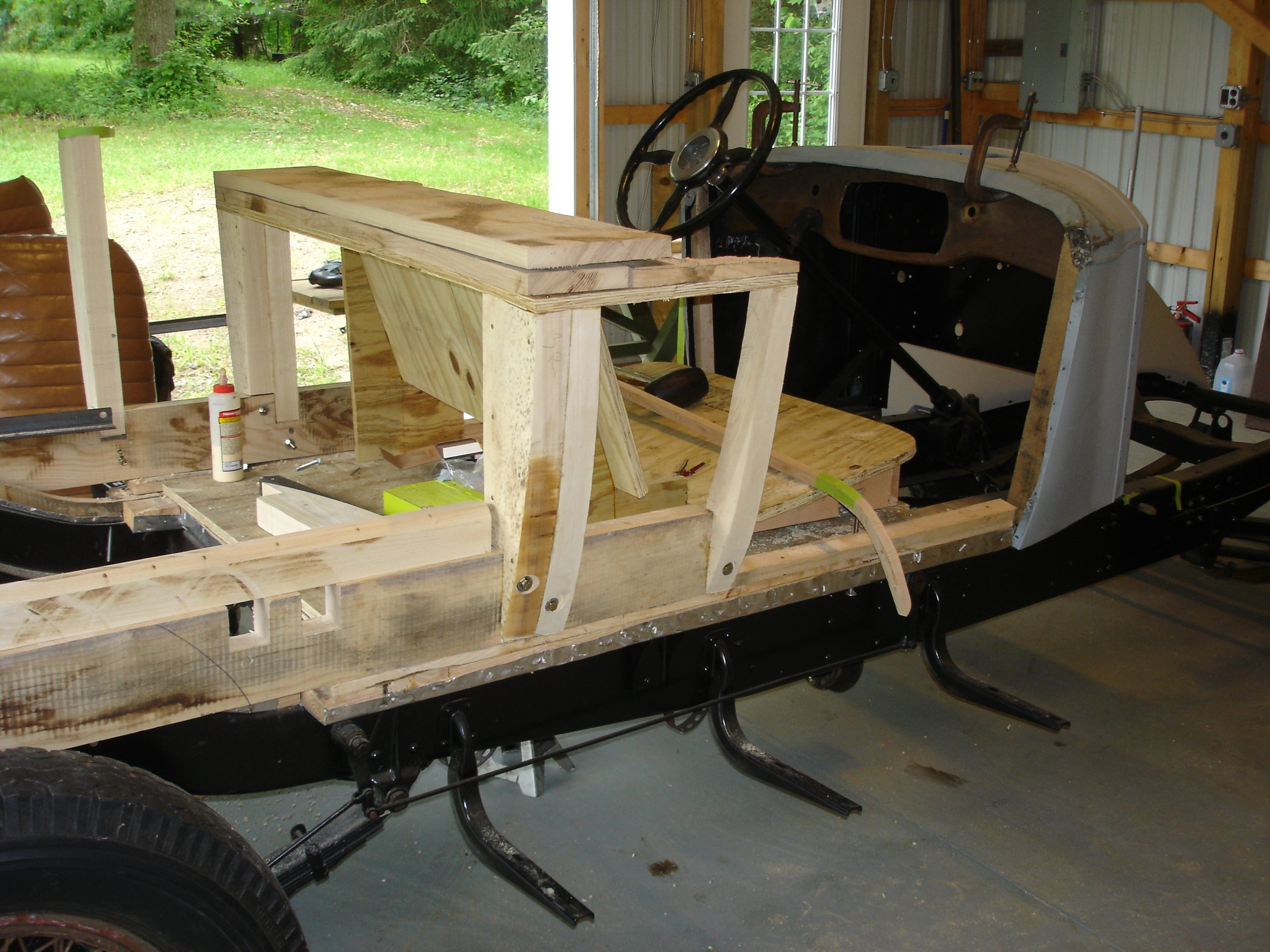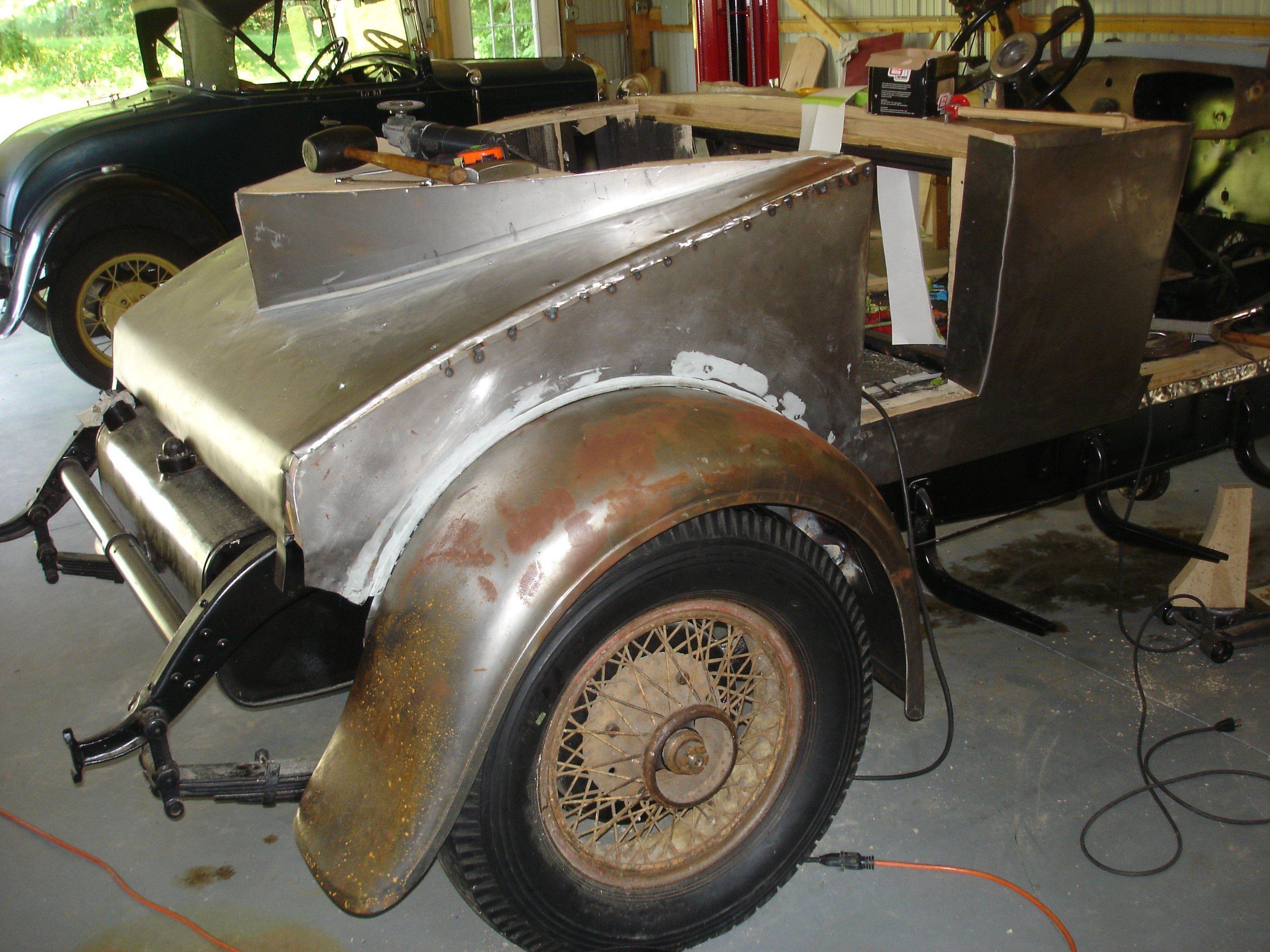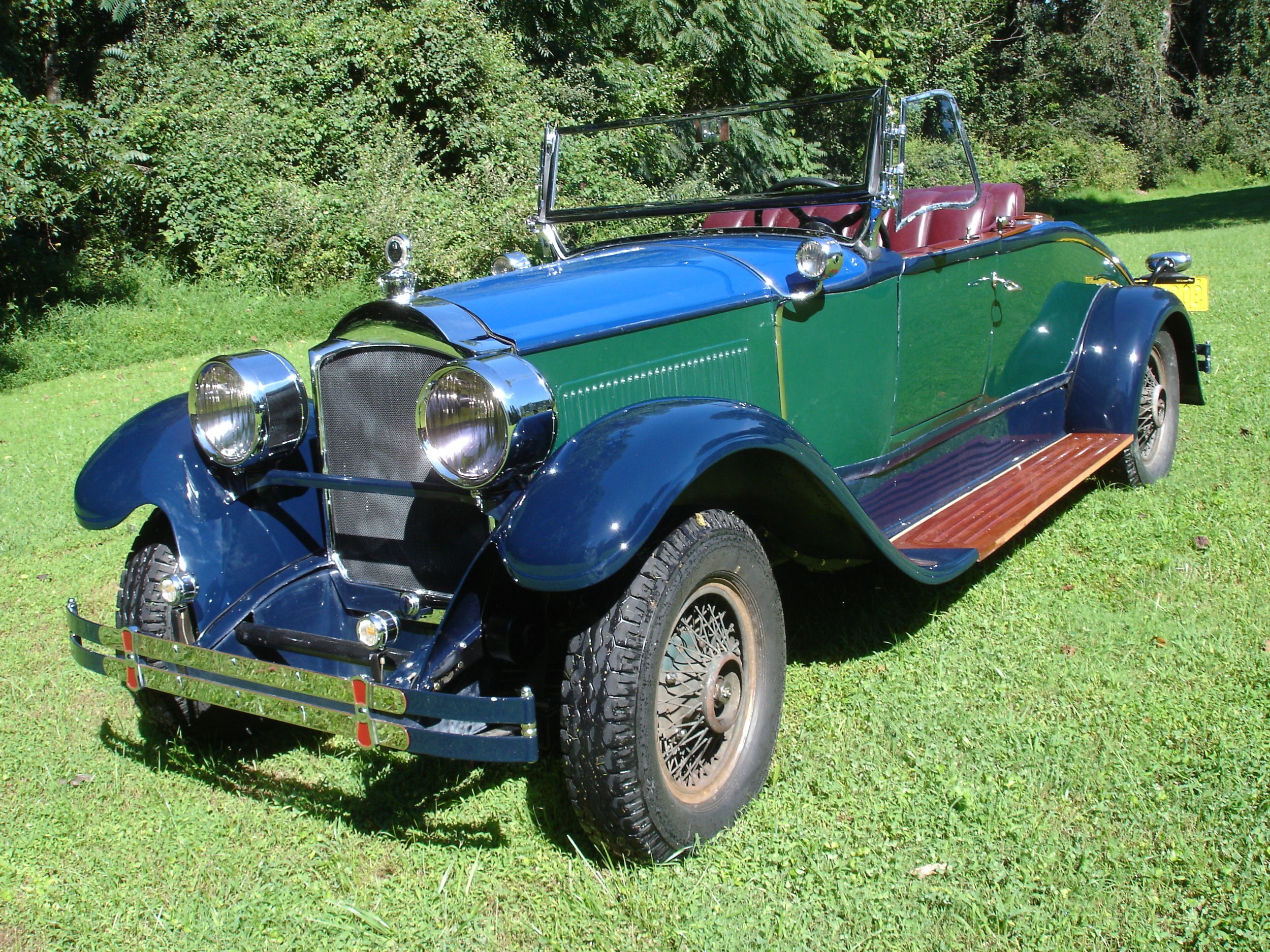Introduction
I can’t say that I’ve met John Lawrence physically yet, but from our email exchanges I think that I know a little about what makes him tick. Like the beaver that hears an annoying trickle of water streaming by and just has to dam it quiet, Lawrence is a man who sees a rusty wreck of an old car and feels compelled to restore it. There’s the two-owner 1931 Ford Model A Town Sedan that Lawrence restored for his father-in-law, a 1930 Ford Roadster, and a number of others that have passed through his garage. But never a speedster, and ooh, the itch to have one had eventually set in….
Down on the Farm
Lawrence formed an idea of what he wanted to do—make his own custom speedster, and he figured that it would take a large chassis to execute it. A discarded 1928 Packard 533 Sedan with a 133-inch chassis was located in Winnipeg, Canada, having seen better times many years before. It had long ago been stripped of its sedan body and made into a farm truck, then subsequently de-bodied and put into storage.
1928 Farm truck Packard in the process of being rescued. all photos courtesy John Lawrence.
Back Home in Pennsylvania
Lawrence heard about the 533 and brought it home, with intact drivetrain and engine cowl, to his garage in Pennsylvania. It was a rusty mess.
1928 Packard 533 project in the process of delivery. Is that a “What have I got myself into?” kind of smile?
And so began the project: dismantle what was there and inventory the parts. Send off the engine for rebuilding. Strip the chassis to clean and repaint. And on and on and on…
The Packard engine in its as-found state.
Increments
The Packard chassis stripped and being assessed. Dirty, but intact.
A new body was needed, and Lawrence had a store of old-growth timber salvaged from a nearby estate. The passenger compartment became Lawrence’s starting point; since most cars of that era shared similar compartment requirements, Lawrence got his dimensions from his 1930 Model A Roadster.
The salvaged wood was cut, planed and then used to build the cowl and door frames (over the initial plywood foundation pieces), which would later be skinned with 20-gauge steel.
Note the plywood foundation pieces and the hardwood cowling being formed up.
More of the cowl framing is visible in this shot, as well as the beginnings of the boattail.
Although the wood was prepped using Lawrence’s collection of woodworking equipment, all of the metal forming would be done using hand tools and applying John Dewey’s “learn by doing” approach, as Lawrence hadn’t yet built a car body from scratch. This would take some time. Years, even.
Pattern-making the rear sides pieces. Note that the boatail and the closing pieces have been skinned.
Bringing It All Together
After a couple of years of measuring, cutting wood and screwing it into place, and solving problems like a third door access for the rumble seat, a wooden body took shape that eventually was skinned in select places with hand-formed steel. The door sills and dash top were covered using Brazilian cherry, while the rumble seat cover and the rumble seat surround were built with mahogany, the lattermost being planked to resemble that of a skiff. Brazilian cherry trimmed them out and satinwood pegs capped the necessary screws.
Laying out the mahogany top pieces for the boattail.
Other challenges arose and were addressed. The car had come with two Packard front fenders, but no rears.
Rear fenders being fitted. Note the tack welds on the metal body.
Lawrence ordered two Model A rear fenders, then had the fender beads re-rolled to match the one-inch bead of the Packard fenders. A mahogany running board that connected the fenders was overlaid with stainless steel beading strips and stainless edging.
The windshield solution could take up a whole article itself to explain all of the fabrications that were done to make it work. Bottom line: what was needed was a forward-folding speedster style windshield. Lawrence brought his ideas and stanchion parts to a machinist friend, who turned them into a beautiful support for the custom folding windshield that also had a fixed glass lite underneath the folding windshield frame. And, to cap it off, a set of reproduction wind wings were found and mounted.
Windshield pieces being fabricated and then dry-fit. Note that the top glass pivots, but the bottom is fixed.
Packard wind wings; note the Packard inscription on the lower part.
The engine was rebuilt and returned in fine fettle as seen below. Yowsa!
Engine before rebuild.
Engine after rebuild.
Other projects: clutch plate was resurfaced. Brakes were rebuilt and adjusted. Rewiring of the whole car was performed. Lights were sourced and fitted. The seats were built and upholstered in fine maroon leather to set off the body color. Packard hub caps were fabricated and mounted onto the 1929 Chrysler Imperial wire wheels. Little details like these—a thousand of them it seemed—took months and months of resolving, but Lawrence kept at it….
Final Touches
Lawrence researched period Packard colors and found what he wanted in a 1928 catalog that featured a tri-color pattern. As he tells it:
“I painted the body from a car illustration shown in the 1928 Packard catalog - fenders and splash aprons a dark blue, center body a dark green and top of hood and boat tail section light blue.”
1928 Packard body colors from the catalog. Although the hub caps had not yet been fitted, and the mahogany running board had not yet been trimmed with its stainless runners in this photo, you can see those final details in the last shot below.
Of course, this took a couple of seasons to complete, as Lawrence painted the pieces himself under a shade tree in his back yard…
1928 Packard custom speedster as seen from rear. The skiff-like boattail trimmed out nicely with mahogany, and the maroon seats complement the body colors well.
However, what has resulted is a very nicely outfitted Packard speedster that should be good for another hundred years of service! As Lawrence states,
“A sunny day is all that is needed to enjoy the fulfillment of a long-time dream—the making of a custom boattail speedster.”
Well done, sir; well done….
1928 Packard 533 custom speedster with John Lawrence at the wheel. Go drive that speedster!
=Speedster Book News=
Book orders are coming in steadily in the new year, and I am gratified by the personal messages that I am receiving from happy readers. Which means I must be doing something right. Thank you, readers; I am honored.
Although I have been selling Classic Speedsters exclusively from this website, I have also been looking around for select book stores or museum shops that cater to autophiles like you and me. Fellow writer and friend Mark Dill recommended Autobooks-Aerobooks in Burbank, CA, and after contacting them about that possibility, I’m now going to have the book available at their store. If you live in the L.A area you should go check this bookstore out!
As always, please shoot me a note at Editor@ClassicSpeedsters.com if you have a tip or a suggestion for a topic.
And thanks for your support!

















